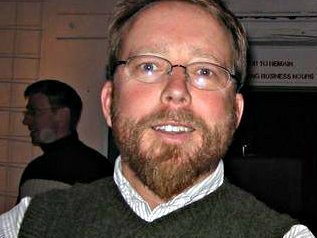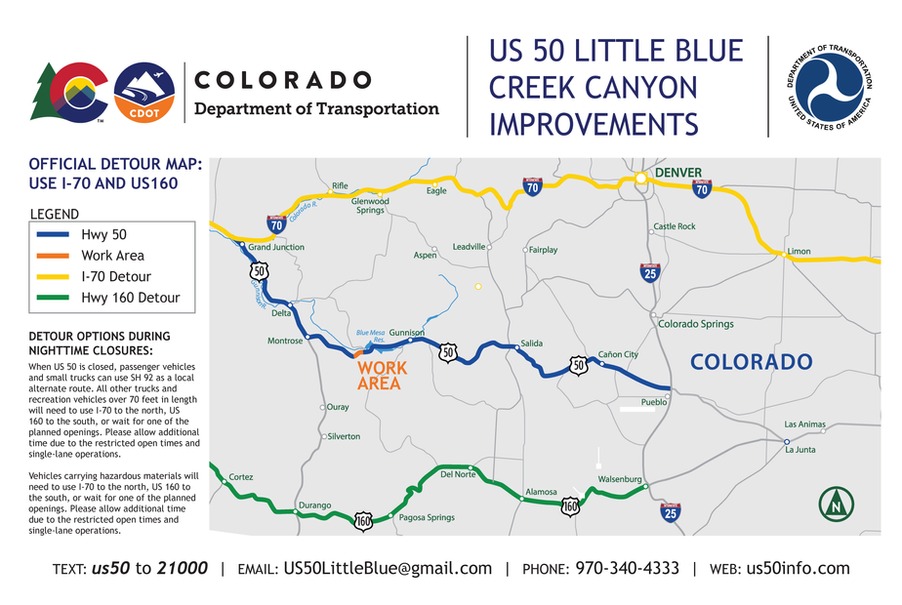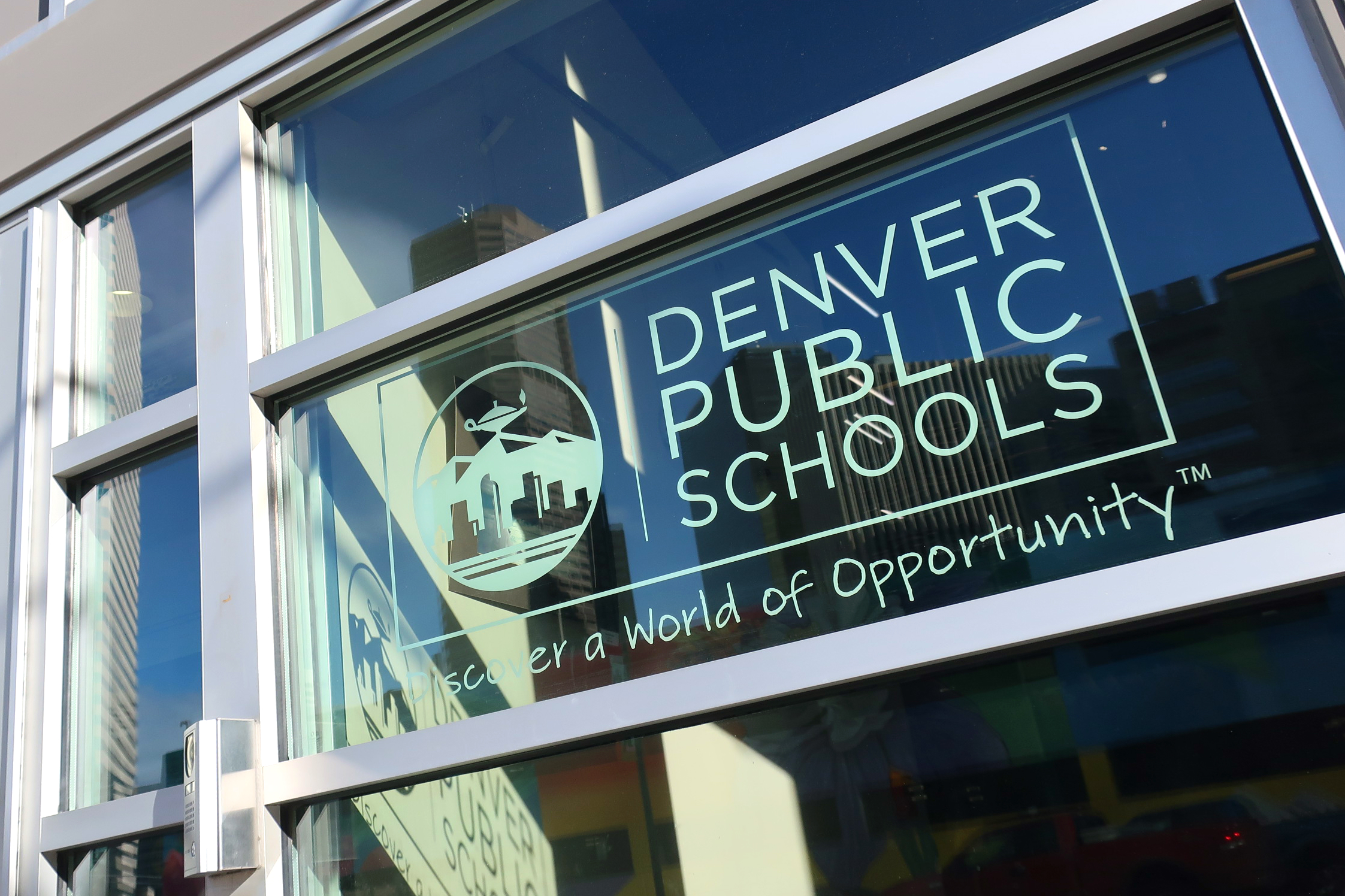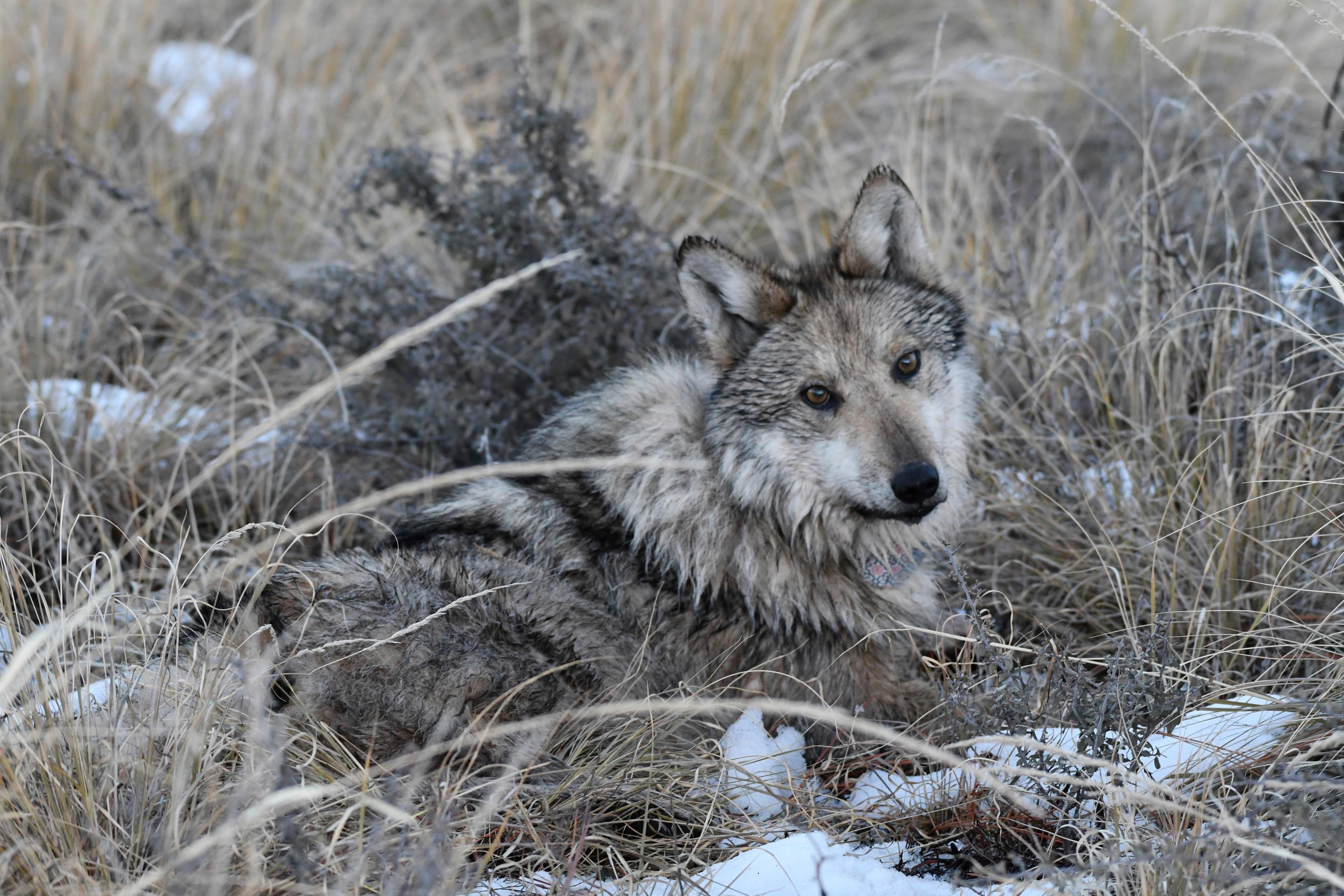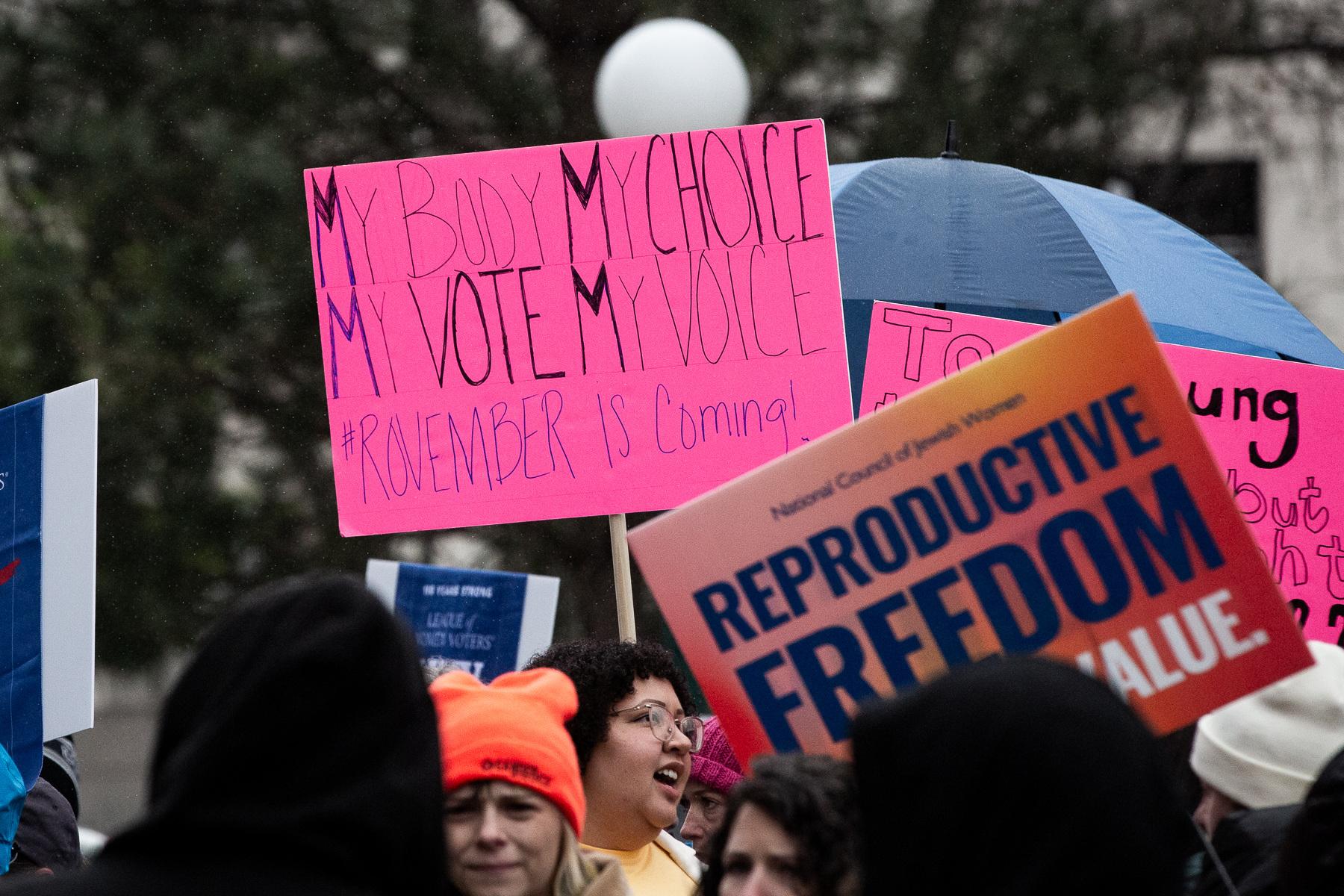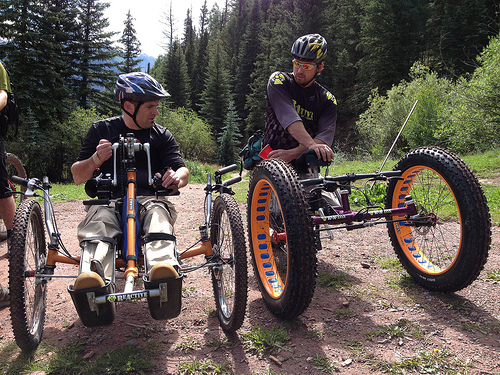

Jake O’Connor of Crested Butte showed some of that off on a bike trail beside the San Miguel River Saturday. He splashed one of the bikes his company, Reactive Adaptations, builds across a shallow spot.
“I love this stuff,” he said, cranking up out of the creek, a huge smile beaming under his bike helmet.
O’Connor led half-a-dozen other riders on his company’s bikes. They all have three wheels, two in front and one in back, and are built for people who can’t use their legs.
O’Connor himself is paralyzed below the waist. The bikes he builds are called off-road hand cycles, with hand cranks instead of pedals. Some have upright seats, others place the rider in a kneeling position, leaning forward, and allow them to steer with their chest.
Jason Regier of Denver tried one out for the first time, and loved it.
“I’m a C-6 quadriplegic,” he said, referring to the cervical vertebrae he fractured that rendered him paralyzed from the chest down. “I’ve got half use of my arms, I have one wrist muscle out of four and can’t move my fingers at all. But to be able to get out on a trail and some ups and downs, it’s phenomenal,” he said.
Regier says there’s no way his wheelchair would work on even this pretty gentle trail. Even small hills and rough terrain make it tip over. But the hand cycle allows him to shift into low gears on the uphills, and its low center of gravity and three wheels keep him stable.
“It’s just cool,” he says, letting a volunteer splash water across his back, since his body is no longer capable of sweating. “You get access to places that you just weren’t in a while, and you forget what you’re missing.”
Experiences like this are what the No Barriers Summit is all about: People with disabilities helping other people with disabilities figure out how to overcome them to enjoy the outdoors.
“This morning I met a kid, he’s blind, he’d never hiked before, and he was pretty tentative,” said Erik Weihenmayer, a co-founder of No Barriers from Golden
“We hooked him up with a guide, taught her how to ring a bell in front of him, taught him how to use trekking poles and feel his way up the trail. He caught on in no time, reached the summit with the team, and we all celebrated. So, that kid, I think he’s better off from that experience.
Weihenmayer, who’s climbed Mt. Everest and many other high peaks around the world, says experiences like the kid who’d never hiked before had are about more than just learning how to have a nice day in the mountains. It’s about gaining the confidence they need to conquer what he says is the biggest fear of people with disabilities.
“The biggest fear isn’t just, like, y’know, not walking again or not seeing again. The biggest fear is that you‘re going to be swept to the sidelines and just listen to life go by. Nobody wants that. You want to be in the thick of things.”
The No Barriers Summit is also a showcase for the latest adaptive sports and daily living technology. And the last few years have seen some remarkable innovations.
Amada Boxtel of Aspen demonstrated a cutting edge “exoskeleton” – basically a robotic suit with motors in it to move a person’s legs, and onboard computers and gyroscopes to keep them upright and functioning.
“With this technology, hope is alive,” says Boxtel, who is paralyzed from the waist down from a skiing accident.
She’s one of the few people in the world who uses a robotic exoskeleton on a daily basis. The technology is so new and expensive that they’re almost exclusively found in rehabilitation centers at this point, but they’re developing rapidly and designers hope to make them common in just a few years.
Boxtel still needs forearm crutches for stability when she uses her exoskeleton, but it’s amazing to see someone who’s paralyzed from the waist down upright and walking on her own.
She says after 21 years of interacting with the world in a wheelchair, it feels amazing.
“Just to stand tall, and feel my five-foot-seven frame,” she says, “to look at someone eye to eye, to have that delicious heart to heart hug.”
The No Barriers Summit is put on every other year in a different location by the Ft. Collins-based non-profit No Barriers USA.
[Photo: EWhitney/CPR News]
